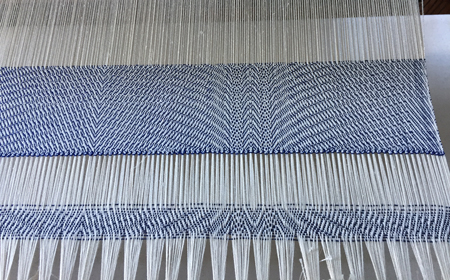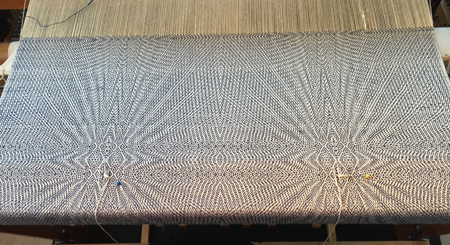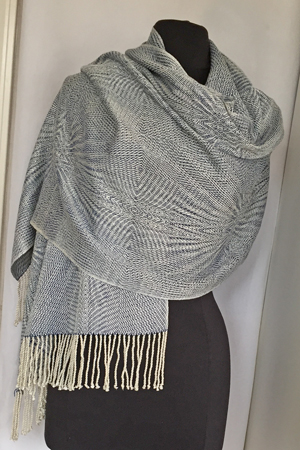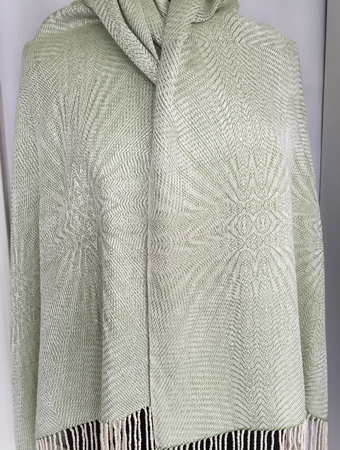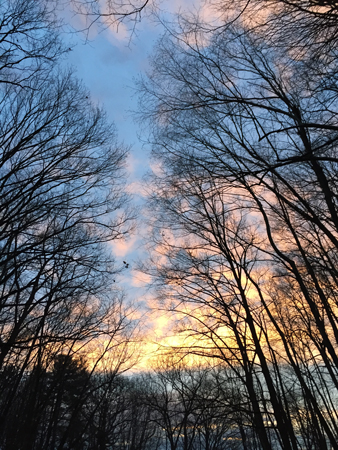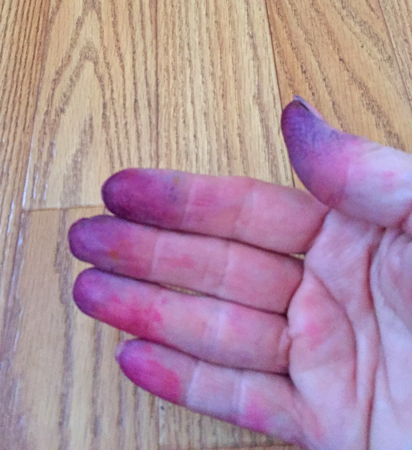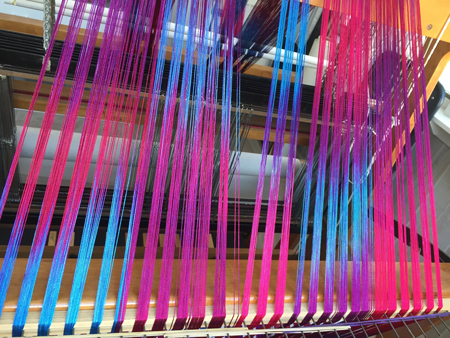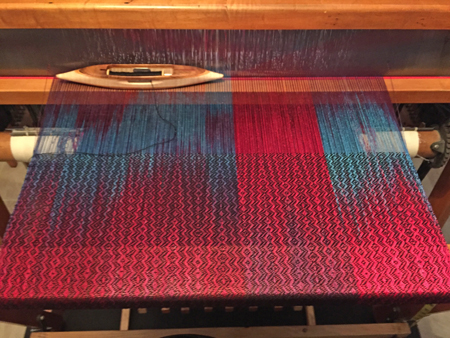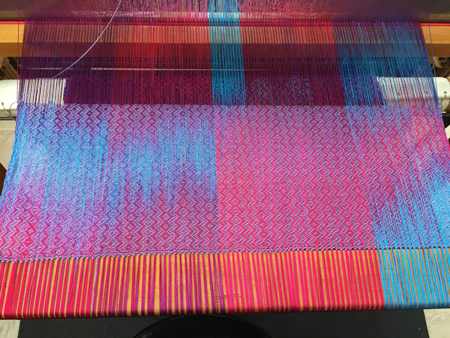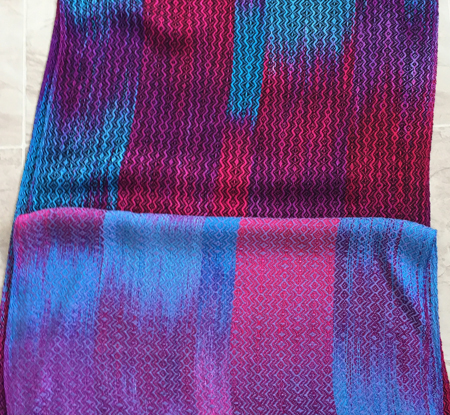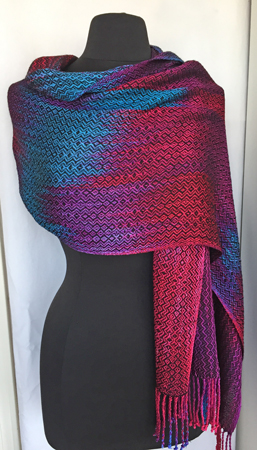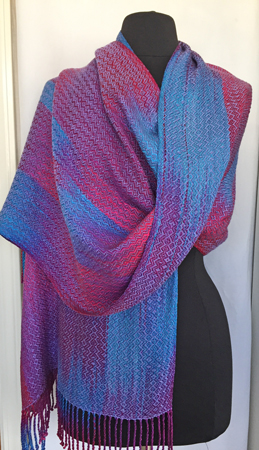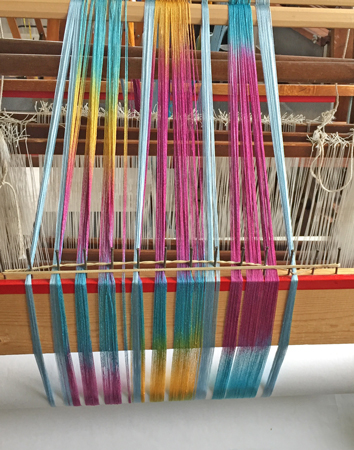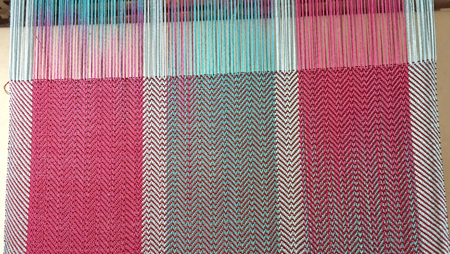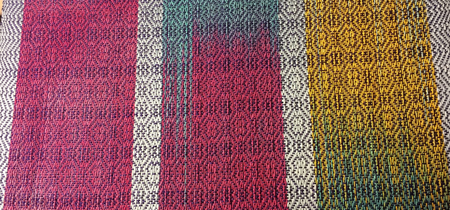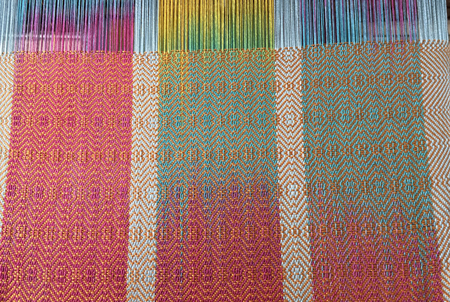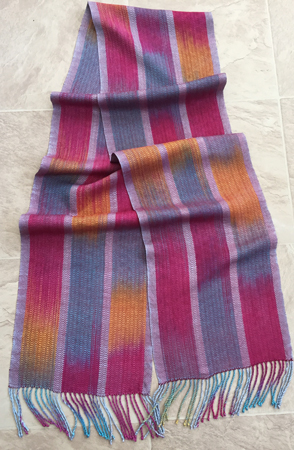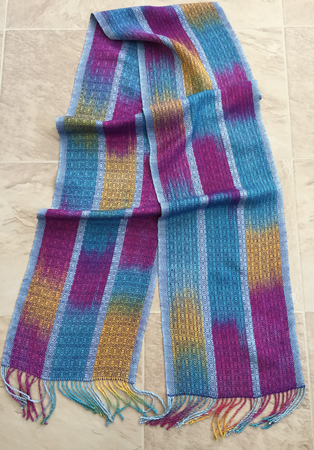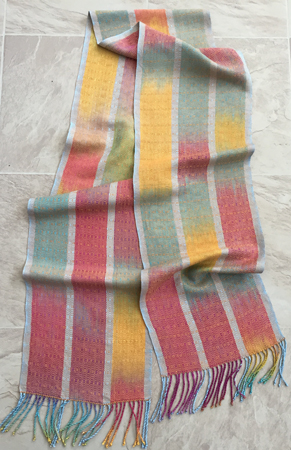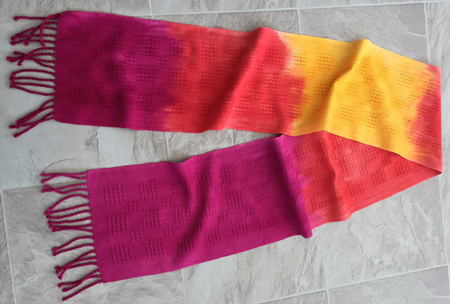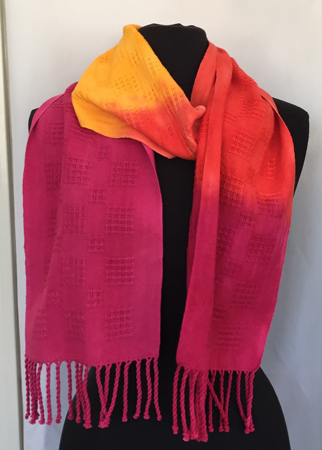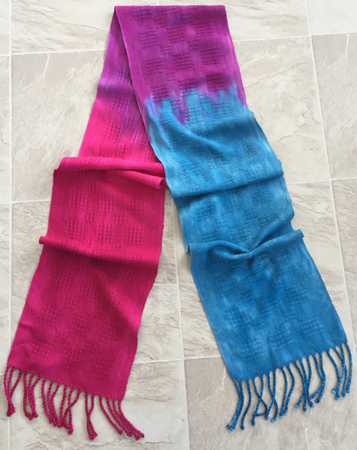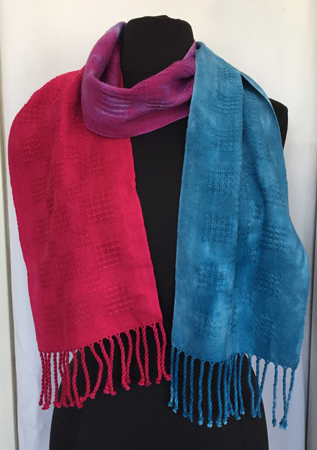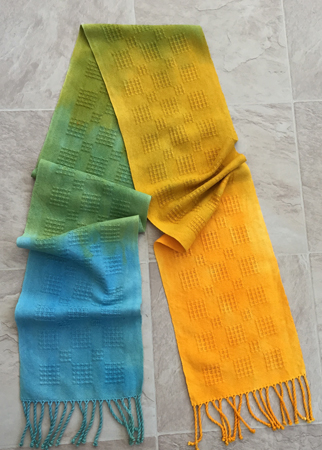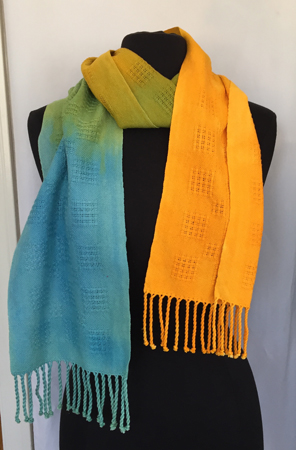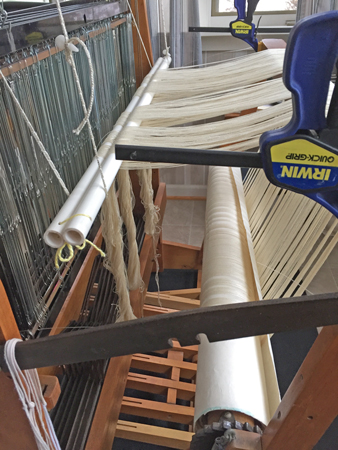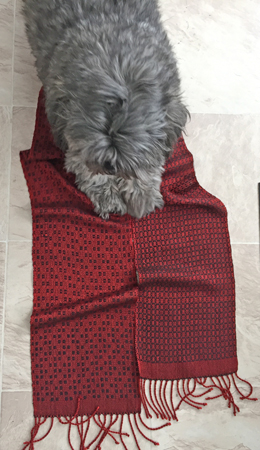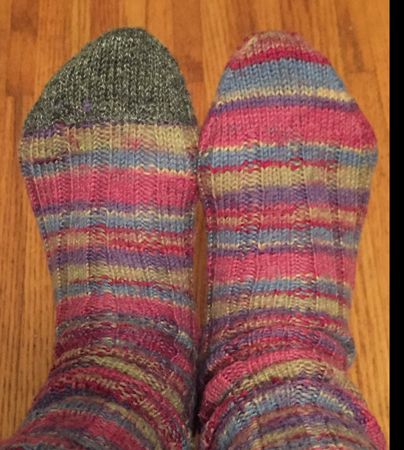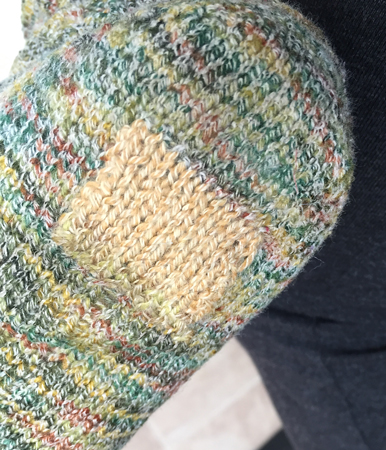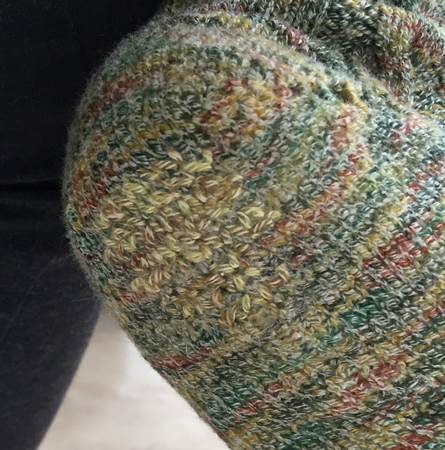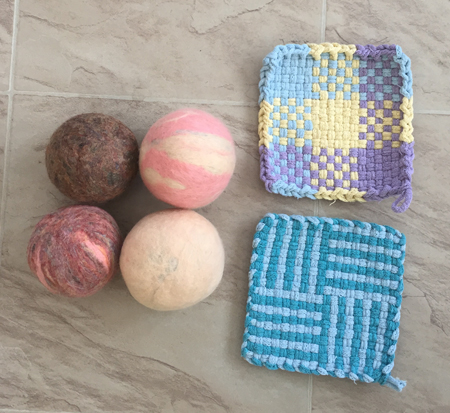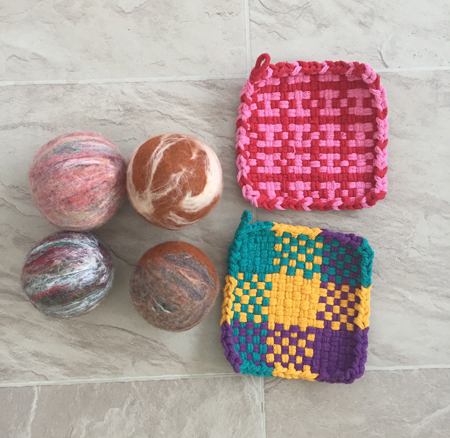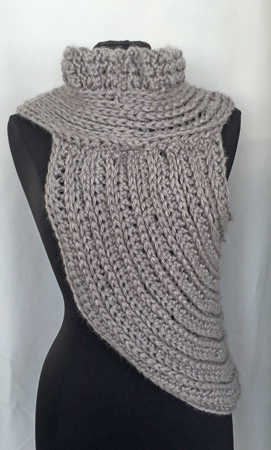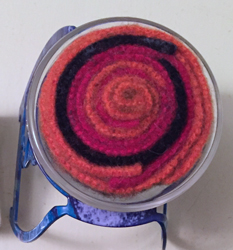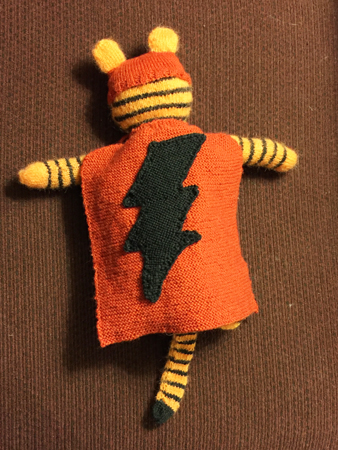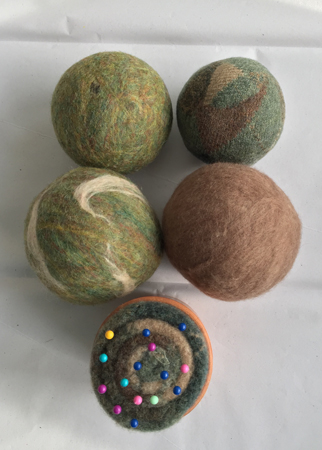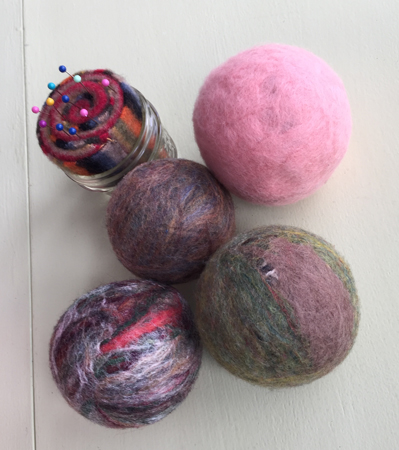How does time pass so quickly and deadlines that were far away suddenly loom?
Here I’m twisting fringes. 72 double-twisted fringes on each end of each shawl. Time consuming.
After busting my butt I got my pieces to the professional photographer, Tim at Pixelwave, on Thursday. Now I just have to put together the applications – time consuming but not too challenging. “Whew!” I said, “I have some time now, I can play. I can dye, or weave a few more pieces for the COE, or weave a piece for the Color Study Group at Weavolution.”
I started planning that last thing, when it suddenly struck me – it’s virtually March. And I committed to a show with the Cazenovia Artisans starting April 1! Because many of my best pieces are at The Copper Shop, I needed to weave more, and not waste much time doing so. Sigh. So let go of the planning I’d done and begin again. I wanted to have at least a few rayon chenille shawls for Cazenovia – I think they should be a good fit in April in central New York. And if they don’t sell I’ll need them for upcoming shows anyway – I sell them almost all summer long.
Anyhow, here’s what I worked on most recently. Those 880 ends of undyed silk that I was working on in my last weaverly post turned into two shawls, the first with a twilight blue weft, the second with a tarragon weft.
I started great….until I realized I was reading the printout backwards. I’d woven about 5″ upside down. If you look at the photo above, you can see how the angles are facing in the early warp-spreading, threading-checking section, and that it’s opposite in the larger actually-woven section. Well, I’d initially woven those 5 or so inches just like the test section. WRONG!!! Because it’s silk and I was afraid I was cutting it close with how much of the twilight I had, I actually unwove all of that instead of simply cutting it out. Time consuming for sure.
With 440+ picks in a single pattern repeat, I had to pay LOTS of attention to my treadling, and figure out ways to mark the printout that would help me very quickly identify where I was if I got lost. I did good, as long as I didn’t listen to podcasts, audio books, or even music that might entice me to sing along. All my focus had to be on the weaving. Here I’d just finished the first pattern repeat.
I’d love to tell you that I designed the pattern, but I didn’t. It’s from David Xenakis, on page 56 in the Twill Thrills book. I did change the threading at the selvedges to straight twill, and I found what I think was a typo in the center of the star that resulted in a 9-thread float that I fixed, but really, the heavy lifting was David’s, not mine.
I knew I was taking these babies to Tim so didn’t spend much time on my own photos.
I thought that with more contrast the blue would make the better photo, but I was wrong. Both in person and in the image, the green is far superior. Here you can almost see how the design looks on both sides of the shawl.
I also made the green one an entire pattern repetition longer. I find the blue a bit too short and the green a bit too long, but hey, they are what they are.
Gotta run back to the loom and thread up that rayon chenille!


